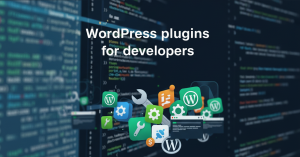In today’s digital world, website speed is crucial for user experience and SEO rankings. A slow-loading website not only diminishes user experience but also adversely affects search engine optimization (SEO) performance. Utilizing web design resources such as Google PageSpeed Insights, GTmetrix, and WebPageTest can help analyze site speed and identify areas for improvement. Image optimization is one of the biggest factors affecting a website’s loading time. Tools like TinyPNG, ImageOptim, and ShortPixel are excellent resources for compressing images without quality loss. Since images account for a significant portion of a webpage’s total size, unoptimized images can cause delays in loading, leading to higher bounce rates and lower conversion rates.

Optimizing images involves reducing file sizes without compromising quality, choosing the right file formats, implementing compression techniques, and using responsive images that load efficiently across different devices. Proper image optimization enhances website performance, making it faster and more efficient, ultimately leading to a better browsing experience for users.
Moreover, search engines like Google prioritize websites with faster loading speeds, meaning that an optimized website has a better chance of ranking higher in search results. This, in turn, increases organic traffic and improves engagement. Faster websites not only provide a better experience for visitors but also positively impact key SEO metrics such as time on page, bounce rate, and conversion rates.
In this guide, we’ll explore various techniques to optimize images effectively, including best practices for compression, resizing, lazy loading, caching, and using modern image formats. By implementing these strategies, you can significantly boost your website’s speed and SEO performance while ensuring high-quality visuals remain intact.
Understanding Image Optimization
Image optimization is the process of delivering high-quality images in the right format, size, and resolution while keeping file sizes as small as possible. This balance ensures that your website remains visually appealing without sacrificing performance. There are several aspects of image optimization to consider:
- Compression – Reducing the file size of an image while maintaining acceptable quality. Use this online tool.
- Resizing – Adjusting image dimensions to fit the specific space it will occupy on a webpage.
- Format Selection – Choosing the appropriate file format (JPEG, PNG, WebP, etc.) for different types of images.
- Lazy Loading – Loading images only when they become visible on the user’s screen.
- Caching and CDN Usage – Storing images closer to users to reduce load times.
By mastering these techniques, you can create a visually stunning website that loads quickly and ranks well on search engines.
The Impact of Image Optimization on Website Performance
1. Faster Page Load Times
When images are optimized, they consume less bandwidth and load more quickly, improving the overall speed of a website. A fast-loading website enhances user experience, as visitors are more likely to stay and interact with the content. Research shows that users expect web pages to load within two seconds, and delays lead to frustration, increased bounce rates, and lost engagement. Optimized images contribute to smoother navigation, reduced waiting times, and improved retention rates, making them a crucial element in web performance.
2. Improved Mobile Experience
With more people accessing websites through mobile devices, optimizing images for mobile browsing is essential. Mobile users often have slower internet connections compared to desktop users, making large images problematic. Unoptimized images lead to excessive data consumption, which can deter mobile users from engaging with a website. By optimizing images through compression and responsive design, websites can ensure a seamless and efficient browsing experience on all devices, reducing frustration and increasing user satisfaction.
3. Increased SEO Rankings
Google’s search algorithms prioritize page speed as a ranking factor, making image optimization a key SEO strategy. Websites with faster load times tend to rank higher in search results, leading to increased visibility and organic traffic. Furthermore, Google’s Core Web Vitals, which measure real-world user experience signals like loading speed, interactivity, and visual stability, emphasize the importance of optimized images. By reducing image file sizes and implementing best practices, websites can enhance their search engine performance and gain a competitive advantage in rankings.
4. Lower Hosting and Bandwidth Costs
Large image files consume significant server resources, increasing hosting and bandwidth costs. Every time a visitor loads a webpage, the server must deliver all its content, including images. If images are not optimized, they put unnecessary strain on the server, leading to higher operational expenses. By compressing and resizing images efficiently, website owners can significantly reduce bandwidth usage, leading to faster performance and cost savings in the long run.
5. Higher Conversion Rates
Website speed directly impacts conversion rates. Studies indicate that even a one-second delay in page load time can result in a 7% decrease in conversions. Slow-loading pages discourage users from completing purchases, filling out forms, or engaging with the content. Optimized images ensure a smooth and fast browsing experience, leading to improved engagement, higher conversion rates, and increased revenue. Whether it’s an eCommerce site or a service-based platform, faster-loading images contribute to better user retention and more successful transactions.
Conclusion
Image optimization is a fundamental aspect of website performance, affecting user experience, SEO rankings, hosting costs, and conversion rates. By implementing best practices such as selecting the right file formats, compressing images, enabling lazy loading, and utilizing content delivery networks (CDNs), website owners can significantly enhance their site’s speed and efficiency. Faster websites not only attract more visitors but also retain them longer, leading to better engagement and higher conversions.
With search engines prioritizing speed and user experience, optimizing images is no longer optional—it’s a necessity. By making image optimization a core part of your website strategy, you ensure that your site remains competitive, loads quickly across all devices, and ranks higher in search engine results. Start optimizing your images today and reap the benefits of a faster, more efficient website!
You might be interested in this topic as well:
1. Top websites for free stock photographs
2. HOW TO DOWNLOAD SHUTTERSTOCK IMAGES FOR FREE?
3. FREE WEB DESIGN RESOURCES WEBSITE TO BOOKMARK




Leave A Reply